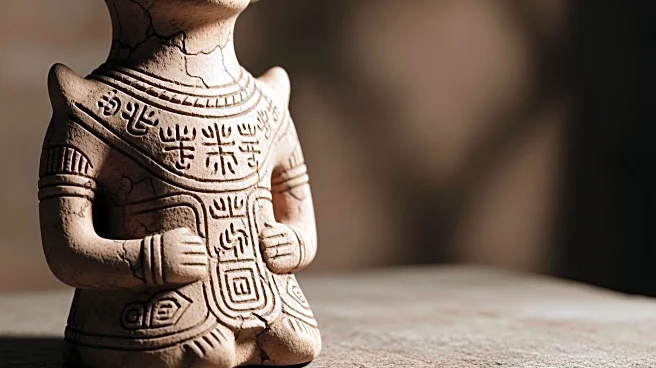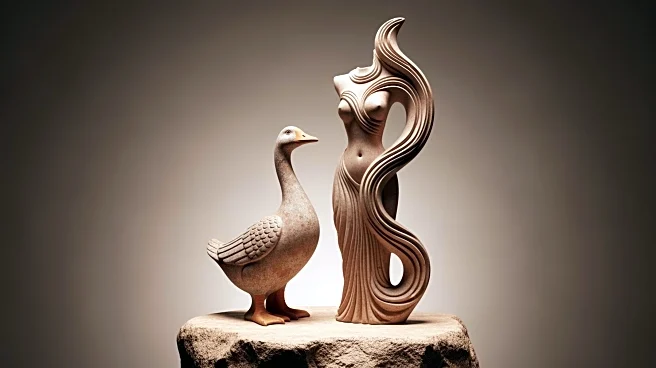What's Happening?
A team of Israeli archaeologists has uncovered a 12,000-year-old clay figurine depicting a woman and a goose at the Natufian settlement of Nahal Ein Gev II. The figurine, measuring 3.7 centimeters, retains
traces of ochre and the fingerprint of its presumed young female maker. This discovery is significant as it represents the oldest known human-animal depiction found in Israel, offering insights into the cultural and symbolic practices of ancient societies. The figurine's intricate design suggests a complex understanding of human-animal relationships and mythological narratives during the Natufian period.
Why It's Important?
The discovery of the clay figurine at Nahal Ein Gev II provides valuable information about the cultural and artistic expressions of ancient societies in the region. It offers a glimpse into the symbolic and mythological beliefs of the Natufian people, contributing to the understanding of early human civilization and its development. Such findings can enhance knowledge of prehistoric art and the role of symbolism in human history. The figurine also underscores the importance of archaeological research in uncovering the rich cultural heritage of the Middle East and its influence on contemporary societies.












